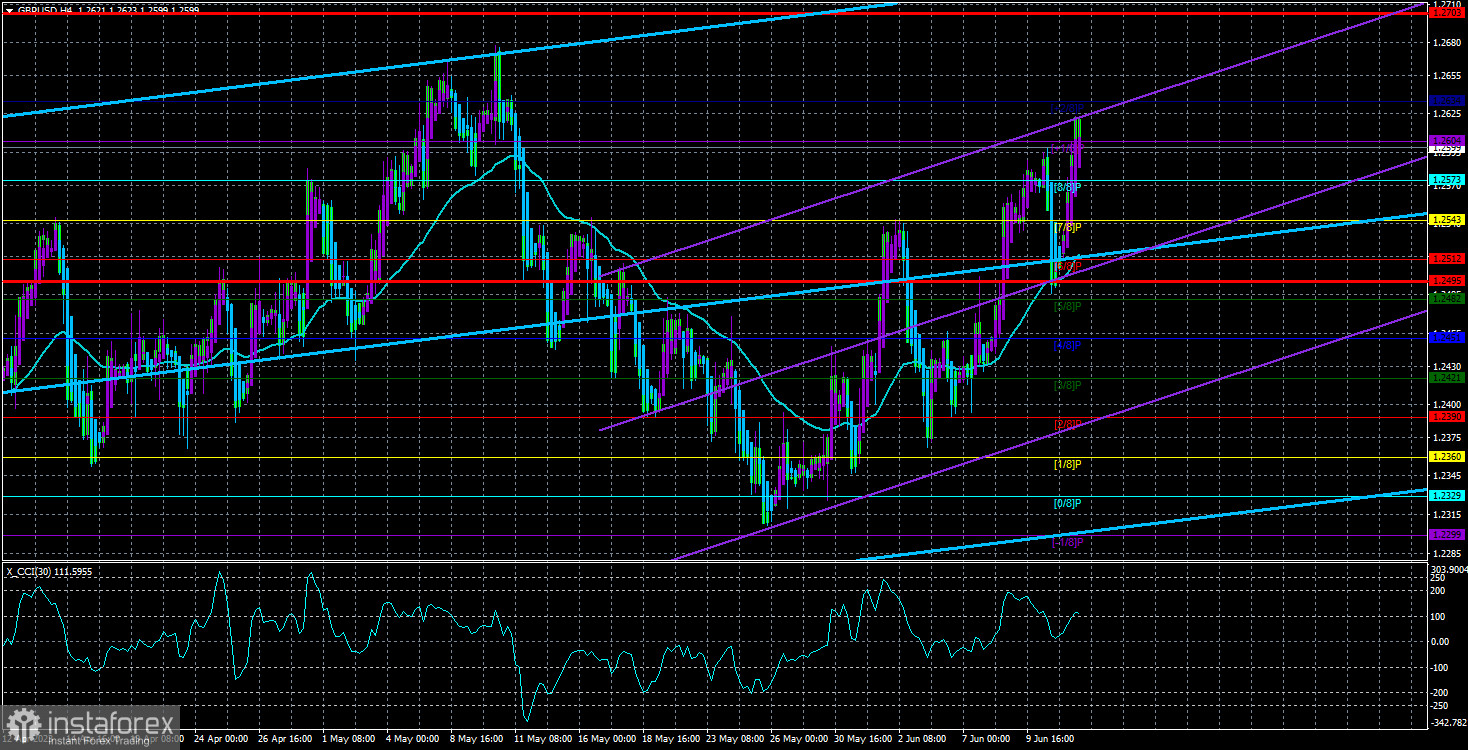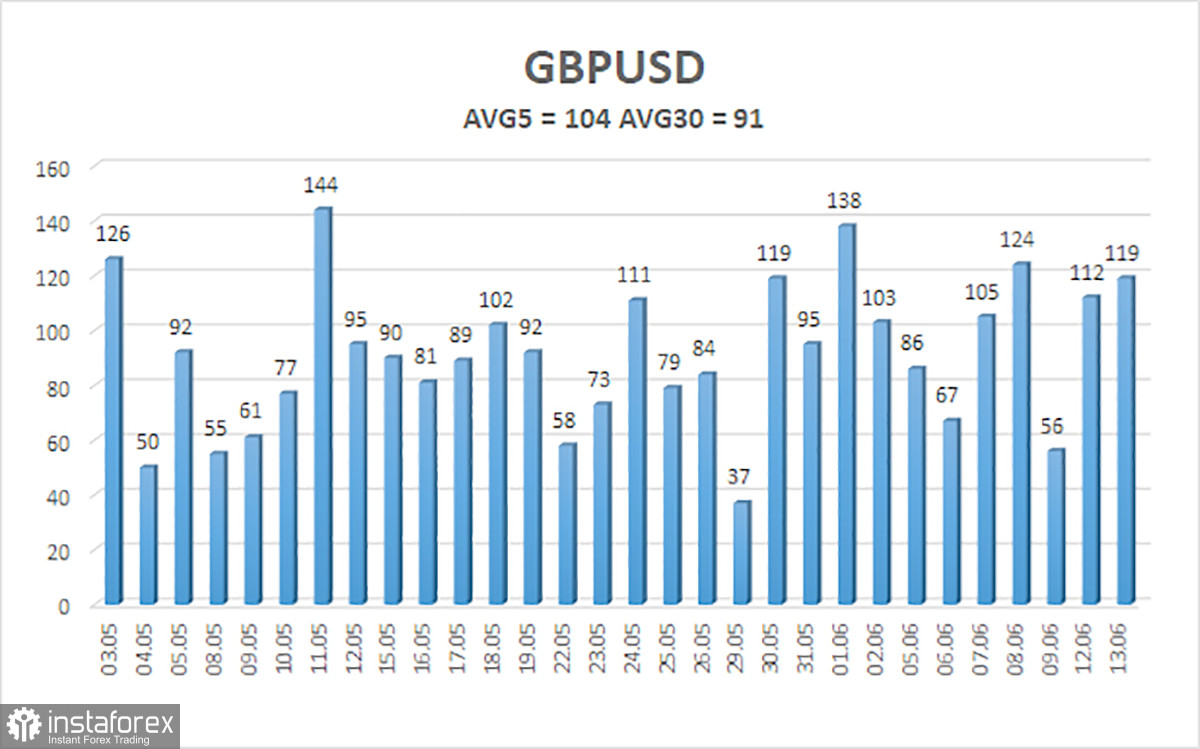
The GBP/USD currency pair corrected toward the moving average line but quickly recovered from Monday's losses. This was facilitated by positive British statistics and disappointing (for the dollar) statistics from across the ocean. Thus, the rise of the British pound on Tuesday is logical and consistent, which has been rare in recent months. Despite the logical rise of the British currency on Tuesday, its overall growth in recent months could be more logical. The pound still cannot properly correct downward after a 2300-point rise, and grounds for its growth must be sought and sometimes invented to explain market developments. Even in recent weeks, the euro has slightly corrected upwards, which is justified by the current fundamental background. At the same time, the pound is growing confidently and is nearing its annual highs, for which there is no basis.
We are returning to Tuesday's statistics. In the UK, there were at least two important reports. The unemployment rate decreased to 3.8% instead of rising to 4%, and the number of unemployment benefits claims decreased by 14,000 in May instead of rising by 22,000. Thus, both of the most important reports supported the pound. As for the report on US inflation, we have already discussed it; it turned out to be stronger than expected (since a decrease in inflation is very good for the economy), but it is bad news for the dollar, as the Fed may now refrain from further tightening of monetary policy. Today, the Fed rate is unlikely to be raised; there is hope for the July meeting. However, two more inflation reports will be released in the US before that, which may also show a significant slowdown. In this case, further tightening monetary policy won't make sense.
There is a 90% chance that the Fed will leave the rate unchanged
Tonight, the results of another Fed meeting will be announced. The key rate may remain unchanged for the first time in more than a year. The market, in principle, is prepared for such a development, so it will not be a surprise. However, the more uneventful the meeting's results, the less likely we will see strong movement. For the British pound, macroeconomic statistics and fundamentals only matter a little in most cases. The fact is that it mostly rises and often does so without any reason. The market probably believes that the Bank of England will raise its rate for the 13th, 14th, or 15th consecutive time and factors them in advance for the exchange rate. We don't have any other explanation for what is happening. If this is true, then the Fed meeting and its results will not matter much to the market. The Bank of England's meeting will only take place next week.
Thus, Wednesday may be a rather boring day in terms of information. Yes, today, there are scheduled releases of monthly data on GDP and industrial production in the UK and the US producer price index, as well as the announcement of the results of the Fed meeting. There are enough events for the pair to trade with volatility and trends. However, monthly GDP data differs from quarterly data, which is important. Industrial production has long disappointed the market, not only in Britain. The producer price index is important, but only as important as the headline and core inflation reports, which have already been published. By the way, core inflation in the US also decreased to 5.3% year-on-year, as predicted. And as we have already mentioned, the results of the Fed meeting may be uneventful and unexciting for the first time in a long time. Therefore, there may be no particularly important news available to traders tomorrow. The pound has been trading with decent volatility recently, so it can be done without the help of news and events.

The average volatility of the GBP/USD pair over the past five trading days is 104 pips. For the pound/dollar pair, this value is considered "average." Therefore, on Wednesday, June 14th, we expect movements within the range limited by the levels of 1.2495 and 1.2703. A reversal of the Heiken Ashi indicator downwards will signal a corrective movement.
Nearest support levels:
S1 - 1.2604
S2 - 1.2573
S3 - 1.2543
Nearest resistance levels:
R1 - 1.2634
Trading recommendations:
On the 4-hour timeframe, the GBP/USD pair continues to stay above the moving average line, so long positions with targets at 1.2634 and 1.2703 remain relevant and should be held until the Heiken Ashi indicator reverses downward. Short positions can be considered if the price consolidates below the moving average, with targets at 1.2482 and 1.2451.
Explanation of illustrations:
Linear regression channels - help determine the current trend. It indicates a strong trend if both channels are in the same direction.
Moving average line (settings 20.0, smoothed) - determines the short-term trend and direction for trading.
Murray levels - target levels for movements and corrections.
Volatility levels (red lines) - probable price channel within which the pair is expected to move in the next 24 hours, based on current volatility indicators.
CCI indicator - its entry into the oversold zone (below -250) or overbought zone (above +250) indicates an approaching trend reversal in the opposite direction.





















